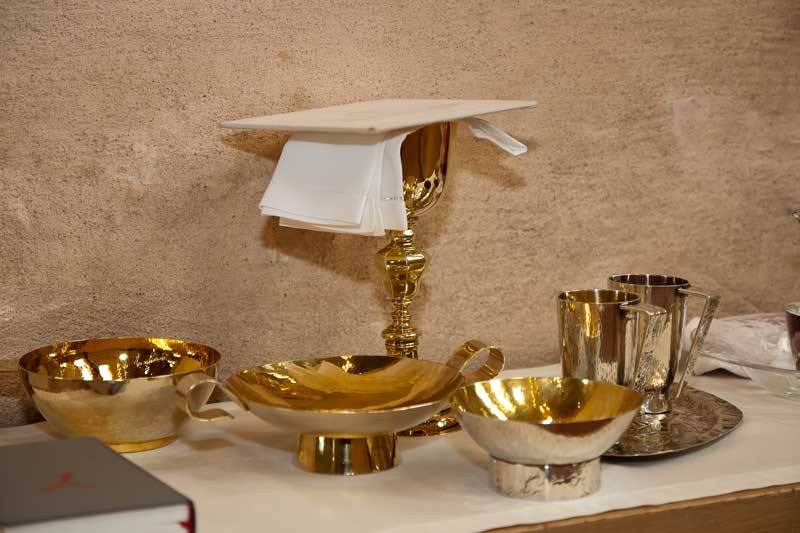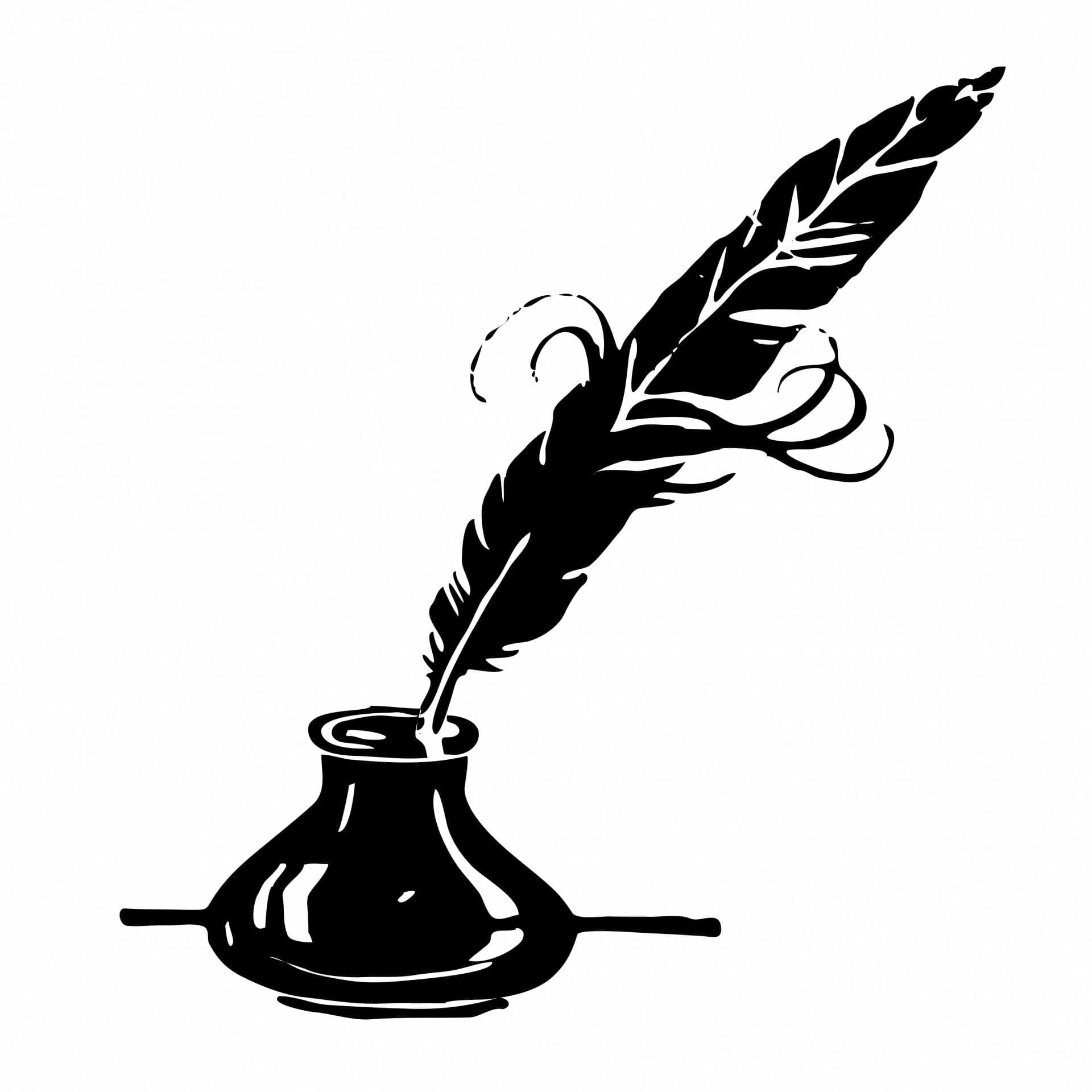This is a guest post and Buy Religious does not necessarily endorse the following content.
We didn’t have to wait long after we started attending RCIA (Rite of Christian Initiation of Adults) to hear about the Eucharist/Communion. The Catholic Church offers this class to anyone who is interested in learning about the Catholic faith, and attending is required for anyone who wants to join the Church. One evening, our Parish preach taught us about the Eucharist/Communion. He explained that the Eucharist is the real body and blood of Jesus. He gave us passages to support this claim. One of several passages that we read in the class was from John 6:22-71.
Christ lays out the dogma of Communion in John 6
“I am the living bread that came down from heaven. Whoever eats of this bread will live forever; and the bread that I will give for the life of the world is my flesh.” The Jews then disputed among themselves, saying, “How can this man give us his flesh to eat?” So Jesus said to them, “Very truly, I tell you, unless you eat the flesh of the Son of Man and drink his blood, you have no life in you. Those who eat my flesh and drink my blood have eternal life, and I will raise them up on the last day; for my flesh is true food and my blood is true drink. Those who eat my flesh and drink my blood abide in me, and I in them. Just as the living Father sent me, and I live because of the Father, so whoever eats me will live because of me. This is the bread that came down from heaven, not like that which your ancestors ate, and they died. But the one who eats this bread will live forever.” He said these things while he was teaching in the synagogue at Capernaum. When many of his disciples heard it, they said, “this teaching is difficult; who can accept it?” But Jesus, being aware that his disciples were complaining about it, said to them, “Does this offend you?” …Because of this many of his disciples turned back and no longer went about with him. So Jesus asked the twelve, “Do you also wish to go away?” Simon Peter answered him, “Lord, to whom can we go? You have the words of eternal life.” (John 6:51-61, 66-68 NRSV).
Most of Christ’s disciples left Him after this. They left because they were offended that Christ was inviting them to eat His flesh. Christ did not stop them. He did not try to bring them back by telling them that He was only speaking symbolically and that they should stay because He was referring to something else. No, He let them leave with the understanding that He wanted them to eat His flesh and drink His blood. It was then that I realized that it is never once said in the Bible that Communion is just a symbol. I had always been taught in Protestant Churches that Communion is an act of remembrance and not literally the body and blood of Christ, yet I came to see that Christ was speaking very literally in John 6.
Our pastor also taught us that the Eucharist is the center of the Mass, and that the Eucharist is Christ’s sacrifice made present, therefore Christ is truly present in the Eucharist. After learning about this and experiencing a few times how Catholics worship, I became very excited. My heart is wanting more and more to go to Mass, because when I go, I am worshipping Jesus with His very presence there among His people.
For anyone who wants a more in depth understanding of what I am about to share, you can find a great explanation of the Eucharist in Scott Hahn’s book A Father Who Keeps His Promises.
We go back to Calvary and the Passover to understand Communion
I want to begin at Calvary. In John 19:30, when Jesus was on the cross, at the moment before He gives up his Spirit, He says “it is finished.” Please consider what is the “IT” Jesus is referring to? Evangelicals see this as referring to the completion of our redemption. The “it” meant that nothing more was needed from that point; our salvation was complete. However, others in the Evangelical community would argue that this answer is incorrect. They would argue that our redemption was not complete until Jesus had been raised for our justification. (Romans 4:25) Either way one looks at it though, none of these are adequate answers as to what Jesus meant by the word “IT.”
To understand the answer to this question, we must first understand the Jewish feast of the Passover. The Passover feast was a memorial, established to commemorate the deliverance of Israel from Egypt. During that eventful night, the Jews escaped the death of their firstborn, by taking an unblemished, firstborn lamb with no broken bones, killing it, and then sprinkling the blood and eating the sacrificial lamb. After this event, Moses led them to Sinai, where through sacrifice and communion they received the law and entered into a covenant with God. When correlating this event to Christ it is important to note that there is only one event in which Jesus used the word ‘covenant’. This is when he is in the upper room instituting the Eucharist/Communion with his disciples. (Mt. 26:27-28) This is where the Lamb of God institutes the New Covenant by becoming the Passover Lamb Himself.
When Jesus stands before Pilate, John 18:33-37 references that it was the sixth hour. This was the very time the Jewish Priests would have begun slaughtering the Lambs for Passover. In the following chapter, John reminds us of Jesus’ bones remaining unbroken, the same that was required of the Passover lamb. John also tells us that the bowl of vinegar that was placed on a sponge and given to Jesus had hyssop in the bowl. Hyssop is the branch that was used for the sprinkling of the blood of the Passover lamb. (Ex. 12:22) Also, the seamless garment that Jesus had stripped from him is the official garment (chiton) that was used by the Priests when sacrificing. (Ex. 28:4; Lv. 16:4)
Next, we must understand more about the Jewish Passover Liturgy that took place in the upper room. This was referred to as the Passover Haggadah. It was separated into four parts, each corresponding to four different cups that were used. The first was a solemn blessing (kiddush) that was performed over a cup of wine mixed with bitter herbs. The second cup was drunk after a reciting of the Passover event (Ex. 12) and the singing of Psalm 113 (little Hallel). The third cup was known as the cup of “blessing,” which was drunk after the main meal that consisted of the lamb and unleavened bread. The fourth was the CLIMAX of the whole event. It was drunk after the signing of Psalm 114-118 (Great Hallel). Paul identifies this cup as the cup of the Eucharist (1 Cor. 10:16)
The Missing 4th Cup
Understanding this is important, because Mk. 14:26 says Jesus and his disciples went up to the Mount of Olives immediately after singing the hymn. Jesus skipped the most important part of the event, the drinking of the fourth cup! This is shown in Mk. 14:25 when Jesus declares that he will not drink of the vine again until he drinks it new in the Kingdom of God. So, the question now to be considered is this. Why did he not drink that fourth cup?
When Jesus leaves the upper room, he goes to the Garden of Gethsemane. Three times he prayed for God to take away “this cup” (Mt. 26:39). The link between the missing cup in the upper room and “this cup” that he asks his Father to take away from him cannot be ignored. We can fully understand the connection as we consider how John wrote about Christ death. For John, the hour of Jesus’ passion, death, and crucifixion, was the same hour of His greatest glory. His death is his triumph, it is this death that brings life to the world. (Jn. 3:14; 7:37-39; 8:28; 12:23-33; 13;31)
So what did Jesus mean when He said “IT” is finished?
Now, after all this, it is time to look back at the initial question. what did Jesus mean by the word “IT” when he proclaimed, “it is finished?” The “it” was Jesus’ fulfillment of the Passover of the Old Testament, transforming it into the Passover of the New Covenant. The Jewish Passover was the covenant sacrifice that Jesus fulfilled through his self-offering. Jesus finished and fulfilled the Passover at Calvary. Calvary began with the Eucharist and the Eucharist ended with Calvary. They are both one and the same sacrifice.
In John Chapter 6, Christ tells five thousand people that they must eat his flesh and drink his blood. He said this literally and did not correct himself when nearly all his disciples left. If Christ was using a metaphor, it would have been easy and essential for Him to have clarified, but He does not. Christ is the first-born Son who was slain, the Lamb with no blemish and no broken bones, He was slaughtered, His blood was sprinkled, and therefore His body must be eaten in Communion.
I want to remind you about the connection to Passover. One must remember that in order for the angel of death to pass by the Jews and not take their firstborn, they had to do three things God commanded. First, they had to kill a firstborn, unblemished lamb, with no broken bones. Second, they had to sprinkle the blood, and third, they had to eat the Passover lamb. Thus, in order for Christ to beour Passover Lamb, we must literally eat the Lamb.



Thank you for your sharing. I am worried that I lack creative ideas. It is your article that makes me full of hope. Thank you. But, I have a question, can you help me?
Thanks for sharing. I read many of your blog posts, cool, your blog is very good.
Can you be more specific about the content of your article? After reading it, I still have some doubts. Hope you can help me.
Your point of view caught my eye and was very interesting. Thanks. I have a question for you.
Can you be more specific about the content of your article? After reading it, I still have some doubts. Hope you can help me.